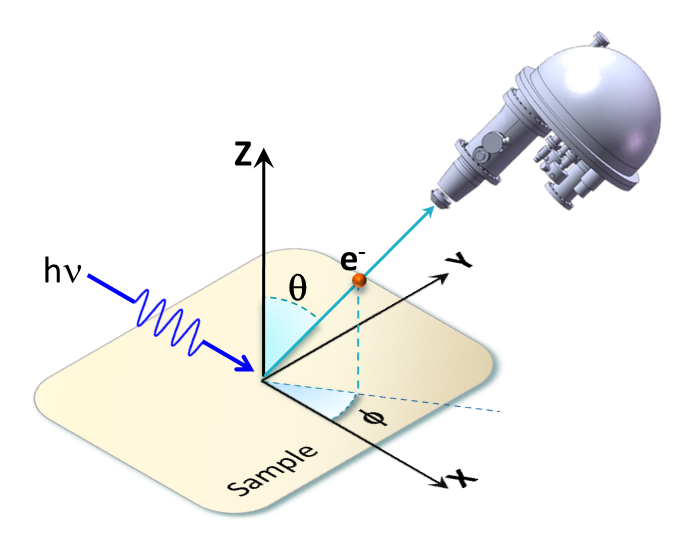Angle-resolved photoemission spectroscopy (ARPES) is a direct experimental technique to observe the distribution of electrons in solid, or more precisely, the density of single particle electronic excitations in the reciprocal (momentum, or k-) space. With the high angular and energy resolutions now achievable, ARPES can measure the electronic structure with great precision, thus representing the best experimental technique to visualize the electron band structure of solids.
In 1887, Hertz observed the photoelectric effect along with the production and reception of electromagnetic (EM) waves, but the underlined principle was not well understood until 1905 when Albert Einstein introduced the concept of light quanta - photons. A schematic of the photoemission experiment is shown in Fig. 1 below, where we send in energetic photons to excite the electrons out of the sample and then record its emission directions and kinetic energy with an electron analyzer. We can deduce their original state inside the sample by applying energy and momentum conservation.
